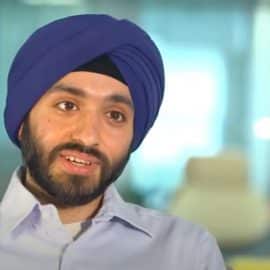


| Personal Brand Presence | 7 / 10 |
| Authoritativeness | 6 / 10 |
| Expertise | 8 / 10 |
| Influence | 5 / 10 |
| Overall Rating | 6 / 10 |
At DeepMind, Pushmeet Kohli leads the research team as a principal scientist. Pushmeet was the director of research in Microsoft’s Cognition group before to joining DeepMind. at his ten years with Microsoft, Pushmeet held a variety of positions and responsibilities, including technical adviser to Microsoft Chief Research Officer Rick Rashid, working at Microsoft labs in Seattle, Cambridge, and Bangalore. Pushmeet writes in the domains of machine learning, computer vision, information retrieval, and game theory. His research focuses on computational sciences and intelligent systems. His current areas of interest in study are interpretable and verifiable knowledge representations from deep models, probabilistic programming, and 3D reconstruction and rendering.
Pushmeet’s study has earned him several honors and trophies. His doctoral thesis, “Minimizing Dynamic and Higher Order Energy Functions using Graph Cuts,” was a runner-up for the British Computer Society’s “Distinguished Dissertation Award” and the recipient of the British Machine Vision Association’s “Sullivan Doctoral Thesis Award.” The conferences for Computer Vision, Machine Learning, Robotics and AI, Computer Graphics, and HCI have published papers by Pushmeet. Numerous stories on his study have also appeared in widely read publications including Forbes, Wired, BBC, New Scientist, and MIT Technology Review. Pushmeet is a participant in the Distinguished Speaker Program of the Association for Computing Machinery (ACM).
An AI research team at Google’s DeepMind project has created a particular kind of AI system that may exhibit social learning skills. The team details how they created an artificial intelligence program that demonstrated its capacity to pick up new abilities in a simulated environment by imitating the behaviors of an implanted “expert” in their publication published in the journal Nature Communications.
The team’s initial task was to create GoalCycle3D, a virtual environment with uneven terrain, different barriers, and multicolored spheres. Next, artificial intelligence (AI) agents were included. Their goal was to navigate the virtual environment by dodging barriers and entering circles. All that was provided to the agents in terms of knowledge about the world they would live in were learning modules. They used reinforcement learning to learn how to go forward.
Solana has demonstrated strong performance, driven by increasing adoption, institutional interest, and key partnerships, while facing potential ...
Know MoreIn April 2025, the crypto space focused on strengthening core infrastructure, with Ethereum preparing for the Pectra ...
Know More